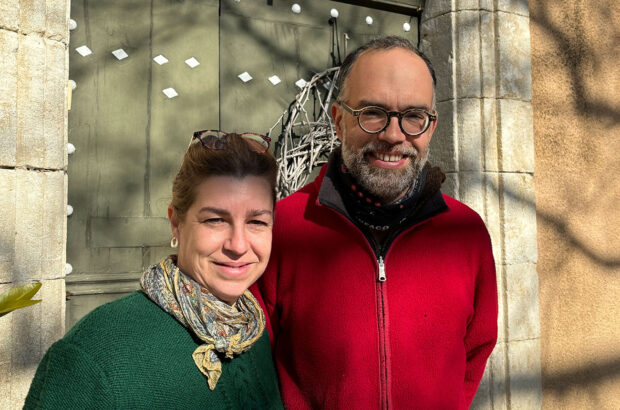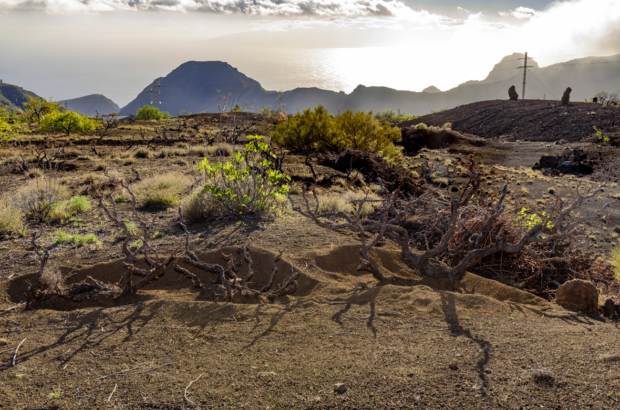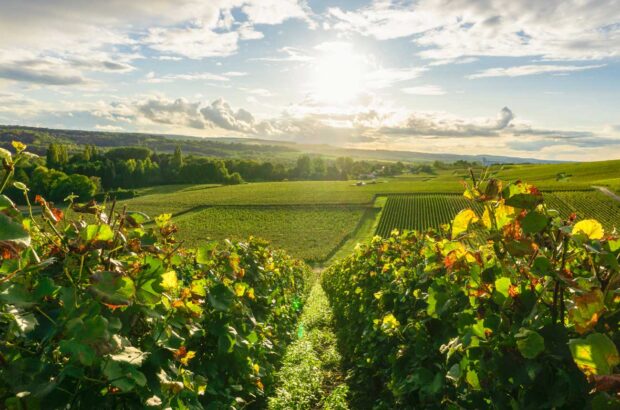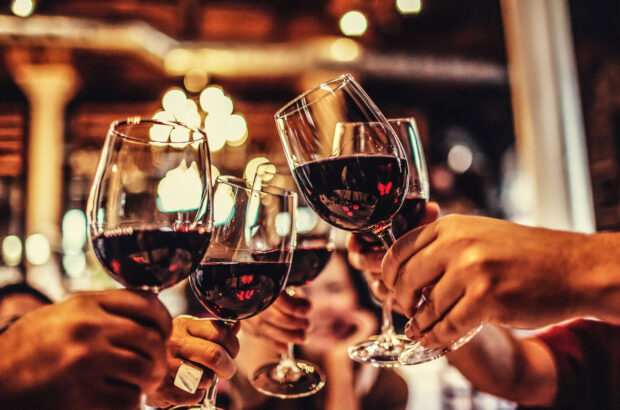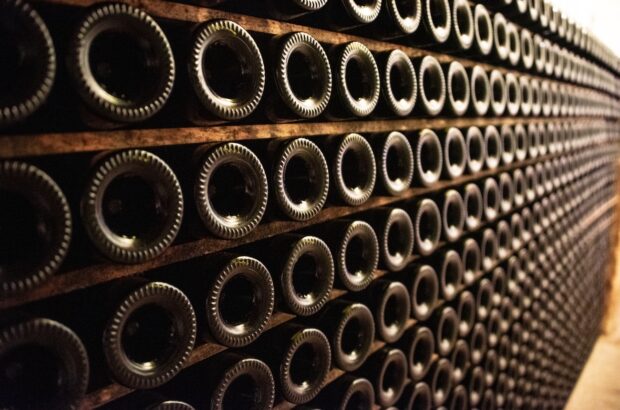Margaret River is no longer a small backwater. With money flooding into the region, and great-value as well as top-quality wines now being produced, james lawther MW meets seven of the newest names who are raising the game for Western Australia��
The last 10 years have seen a dramatic increase in the volume of wines produced in Western Australia’s Margaret River region. From the first tentative plantings madeby Doctors Cullity (Vasse Felix),Pannell (Moss Wood) and Cullenin the late 1960s, the region moved gently to 970ha (hectares) of fruit-bearing vines in 1996, then galloped to 4,000ha in the early part of this century. The consequences are a lot of new fruit, wines and producers. So who – and what – to keep an eye on?
Cabernet Sauvignon originally put the spotlight on the region and is still its main calling card. Often blended with a little Merlot, it has that delectable mix of dark, vibrant cassis fruit and a pronounced but supple tannic structure for ageing.
Site selection and vine age are the key concerns. The gravelly soils of Wilyabrup, 20km north of the Margaret River township, are considered the hub of Cabernet production. But plantings have flowed south towards Augusta and the Southern Ocean where cooler growing conditions produce a finer, leafier style.
Chardonnay is the other major variety. It has a rich but restrained nature, with citrus and tropical fruit flavours and lively acidity. Carefully crafted by top producers it’s a class act with price tag to match.
Australian consumers also enthuse over Margaret River’s Semillon-Sauvignon Blanc blends, and with good reason. A ‘lifestyle’ wine that meets the joint needs of easy drinking and modern cuisine, it’s lively, fresh and fruit driven with an extra dimension to the palate that Sauvignon alone finds hard to achieve. Screwcap closures are prescriptive, as they are for all whites in the region and many reds.
Margaret River Shiraz, with its chunk of dark, peppery fruit and slightly more reserved character, also has its admirers. The other grape varieties, and there are up to 30 cultivated in the region including such ‘exotics’ as Tempranillo, Sangiovese and Petit Verdot, are a little more ‘experimental’ and produced in as yet conservative volume. At the affordable end of the chain they are beginning to look interesting in blends.
https://www.decanter.com/wine/grape-varieties/petit-verdot-wine-52323/
Vintage variation is a phenomenon, meaning consistency can take a knock, especially in the reds. Recent top vintages for both red and white varieties include 2001 and 2004, the former rich and concentrated, the latter beautifully poised with ripe tannins and attractive fruit.
By contrast, 2002 was a cool year so good whites and leaner reds. 2003 was a difficult and uneven vintage due to rain, humidity and heat in February and March so a mixed bag here. 2005 started promisingly, most of the whites harvested in good conditions, but March rain dampened high expectations for the reds.
An oft-quoted figure is that Margaret River is responsible for 3% of Australia’s wine production but 20% of its premium wines. Value for money has rarely been synonymous with the region, but with the increased volume of young fruit, some good, affordable wines are beginning to appear, notably from the producers selected on the following pages.
As to the producers, the early pioneers – Cape Mentelle, Cullen, Leeuwin, Moss Wood and Vasse Felix – as well as Devil’s Lair and Pierro still lead the field. The bigger companies are represented by a revitalised Evans & Tate and Houghton’s wide-ranging but consistent hand. The following are the next wave of upwardly mobile, individual estates already making names for themselves.
Voyager Estate
Voyager now clearly graces the high table of top Margaret River names. Purchased by mining magnate Michael Wright in 1991,no expense or detail has been spared. The original core vineyard south of the town of Margaret River, planted in 1978, has steadily been expanded to the present 103ha. Soil profiling has matched grape variety to site and only the best fruit goes into the label, the rest being sold on. A new, underground barrel cellar has just been completed and there are plans to relocate and modernise the winery. Viticulturalist Steve James and winemaker Cliff Royle are key figures in the success. The Sauvignon Blanc-Semillon and Chardonnay have been consistently good for some time while the Shiraz and Cabernet Sauvignon-Merlot acquired greater stature from 2001.
https://www.decanter.com/premium/voyager-estate-40th-anniversary-tasting-395168/
n Voyager Estate, Chardonnay 2004 HHHHH
Fine, elegant style. Oak well integrated. Citrus-pineapple notes with a honeyed edge on the palate. Lovely balance. Up to 2009. £13.99; J&B
Juniper Estate
Juniper is another reinvented domaine. Formerly known as Wrights, the Wilyabrup estate was bought by Perth businessmen in 1998 and rebaptised. Mark Messenger, former assistant winemaker at Cape Mentelle, was hired as winemaker and viticulturalist. The vineyard, with a central block of 8.5ha of vineyard planted in 1973, has been steadily brought up to scratch, the old block retrellised, Riesling replaced with Cabernet Sauvignon and an extra 2.4ha of vineyard added. A new winery and barrel cellar were also built. A second good-value label, Juniper Crossing, is produced from a mix of contract and estate fruit while Juniper Estate is 100% estate. There’s quality and consistency across both ranges with particular mention for the Crossing Chardonnay and Semillon-Sauvignon Blanc and Estate Semillon, Shiraz and Cabernet Sauvignon.
n Juniper Estate Cabernet Sauvignon 2002 HHHH
A lighter vintage but lovely balance and length. Leafy, cassis aroma and flavour with a chocolatey note. Fine tannic frame. Up to 2012. £12.99; Adn
Suckfizzle, Stella Bella & Skuttlebutt
These jaunty labels are the brainchild of Janice McDonald and partner Stuart Pym, she the former and he the present winemaker at Devil’s Lair. A visionary approach has placed the emphasis on sourcing good-quality fruit, and brand building, so the grapes are processed at contract facilities and the wines matured and stored at the old Rosa Brook winery. The Suckfizzle (named after a Rabelais character) Sauvignon Blanc-Semillon and Cabernet Sauvignon are single-vineyard wines from ‘the most southerly vineyard on the continent’ and express a cool, refined character. The mid-market Stella Bella range includes classics like Chardonnay as well as ‘exotics’ such as the Sangiovese-Cabernet Sauvignon. Skuttlebutt (red, white and pink blends) is aimed at the value-for-money sector.
n Stella Bella Semillon-Sauvignon Blanc 2005 HHHH
Lovely grassy, minerally, passion fruit flavours. Good depth of fruit with a note of waxy complexity. Fresh finish. Drink now. £8-11; All
Hamelin Bay
Richard Drake-Brockman and his wife Ros established this property at Karridale in the southern part of Margaret River in 1992. Growing conditions here, on the 25ha vineyard site, are cooler, and Cabernet Sauvignon and Shiraz are planted on the upper slopes of the hills, with a northwesterly exposure for afternoon heat, with Chardonnay, Semillon and Sauvignon Blanc lower down where a northeasterly aspect catches the morning sun. The wines are made at a nearby contract winemaking facility under the supervision of winemaker Julian Scott. The whites are impressive, all with a pure, fresh character and, in the case of the Chardonnay, well-handled oak. The reds are cool-climate in style but gaining in intensity with vine age, the Shiraz with its black, peppery fruit the pick to date. Top of the range are the Five Ashes Reserve Chardonnay and Shiraz. In the value-for-money sector are the blended, early-drinking Rampant Red (look out for the 2004) and White.
n Hamelin Bay, Five Ashes Reserve Chardonnay 2003 HHHH
Intense, sophisticated. Clean-cut fruit with citrus-mandarin aroma and flavour. Subtle vanilla oak. Fresh, zesty finish. Up to 2008. £17.38; Ell
Edwards
Brian Edwards was obviously a man with the spirit of adventure. In 1990 he flew his Tigermoth, ‘Matilda’, from England to Australia for charity and in 1993 launched into grape growing at a former cattle ranch in Wilyabrup. Still a family affair, 25ha Edwards is now run by sons Christo and Mike. Christo has managed the vineyard since the first plantings in 1993, while Mike took over the winemaking in 2004 following a period as assistant winemaker at Voyager. The wines, reds and whites, are seriously good value, the quality ensured by a maturing and well-run vineyard (‘we do lots of green work like shoot removal, leaf plucking and crop thinning’) and Mike Edwards’ deft winemaking. The range is classical: Semillon-Sauvignon Blanc, Chardonnay, Shiraz and a 100% Cabernet Sauvignon.
n Edwards, Shiraz 2004 HHH
Medium bodied. Dark, spicy, peppery fruit. Fine, ripe tannins. Up to 2008. TBC; GrM
McHenry Hohnen
As an early pioneering figure at Cape Mentelle and founder of Cloudy Bay in New Zealand David Hohnen needs little introduction. His latest project takes him on a new venture teamed with winemaking daughter Freya and brother-in-law Murray McHenry. The grapes are mainly sourced from four family-owned vineyards in Margaret River and include ‘exotics’ such as Marsanne, Roussanne, Tempranillo and Mataro. ‘I wanted to take a look at other varieties that would work in the context of our west coast Mediterranean climate,’ he says. The first vintage, 2004, produced six wines including the 3 Amigos white (Marsanne, Chardonnay, Roussanne) and red (Shiraz, Grenache and Mataro) and Tiger Country red (Tempranillo, Petit Verdot, Cabernet Sauvignon). A Zinfandel should also appear this year. It’s a new if marginal vision for Margaret River but one to keep an eye on.
n McHenry Hohnen, Tiger Country 2004 HHH
Reserved, dark berry and spice nose. Palate soft and fruit-driven, finishing on a firm, fresh note. Long and digest. Drink now. £13.99; HvN, WSo
Rosily Vineyard
The 18th-century French explorer, Comte François de Rosily, was unable to secure southwestern Australia for France but as a late claim to posterity his name has been given to this Wilyabrup-based winery. Owned by Perth-based businessmen, the initial plantings for the 12ha vineyard were made in 1995 and a winery completed in 2000 in time for the first vintage. It’s another relatively new venture but the Chardonnay and Semillon-Sauvignon Blanc from winemaker Mike Lemmes show the fresh, pure fruit flavours of the region and the reds are improving. The Cabernet Sauvignon shows precision in a lighter vein and Bordeaux blend The Cartographer should make a splash with the 2004 vintage.
n Rosily Vineyard, Cabernet Sauvignon 2002 HHH
Almost pure Cabernet with a touch of Merlot and Shiraz. Medium weight. Tight and linear. Minerally-cassis notes. Fine tannic edge. Up to 2009. N/A UK; +61 8 9485 0770
Others to watch
The abundance of young fruit in the region means that many of the newer ventures are stronger in their white selections than red. In this respect names to watch are Briarose Estate in the south of the region, Forester Estate in the north, Hay Shed Hill (an old estate being turned around) and Rockfield Estate which now has former Cape Mentelle winemaker John Durham as consultant. A property that bucks this trend is Cape Grace, a tiny 6ha boutique winery whose strongest offering to date is the classic Margaret River Cabernet Sauvignon.
James Lawther MW is a contributing editor to Decanter.



